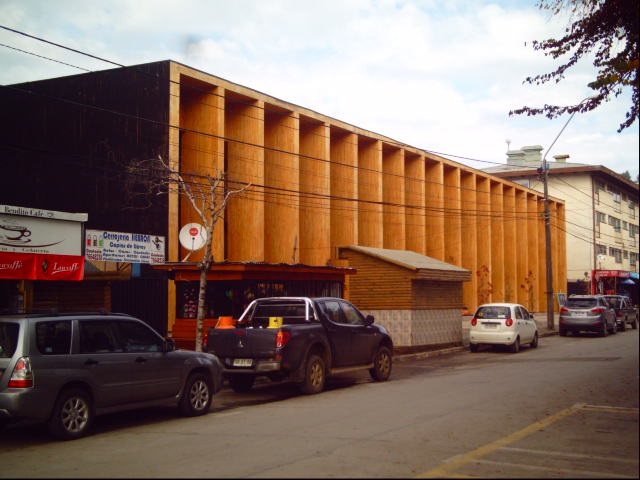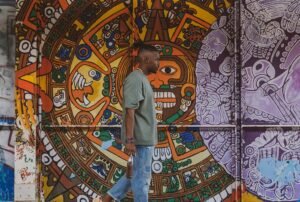
The 15th Venice Architecture Biennale, which opened last week and runs through late November, was curated by renowned Chilean architect Alejandro Aravena, best known for drawing inspiration from and developing creative solutions for those living in the slums of Latin America. Aravena received the 2016 Pritzker Prize, considered architecture’s equivalent of a Nobel award.
The theme of the Venice exhibition is “Reporting From the Front,” and 37 countries have pavilions that offer architectural solutions to 21st-century urban social and infrastructure issues. In his curator’s statement, Aravena explains the thinking behind the exhibition:
“Reporting From the Front” will be about sharing with a broader audience, the work of people that are scrutinizing the horizon looking for new fields of action, facing issues like segregation, inequalities, peripheries, access to sanitation, natural disasters, housing shortage, migration, informality, crime, traffic, waste, pollution and participation of communities.
As described in the Next City article, some of the highlights of the exhibition include:
- The U.S. pavilion, which “has taken its inspiration from Detroit…the subject of seemingly endless thought experiments in urbanism.”
- The Brazilian pavilion, titled “Juntos” (“Together”), which “argues that rudimentary planning tools like street signage and bike lanes deserve lofty recognition because of the way they empower everyday citizens, especially in marginalized communities.” The projects in Brazil’s pavilion also highlight the contributions of nonprofits, government agencies and activists in advocating for change.
As noted in an article in the New York Times, Germany’s pavilion makes quite the political statement, underscoring German Chancellor Angela Merkel’s open-door policy of welcoming refugees and highlighting the need for “unorthodox solutions” in urban areas with high numbers of migrants and asylum seekers. The theme throughout the pavilion is to explore what it means to be an “arrival city.”
“Making Heimat: Germany Arrival Country” makes a case for continuing Germany’s “welcome culture” by presenting case studies and success stories, as well as an inventory of projects to provide shelter for migrants in Germany and elsewhere. The word “Heimat” can be roughly translated as homeland, and the pavilion posits it as a fluid concept that must be established through policy, culture and—of course, architecture.
Sign up for our free newsletters
Subscribe to NPQ's newsletters to have our top stories delivered directly to your inbox.
By signing up, you agree to our privacy policy and terms of use, and to receive messages from NPQ and our partners.
The Times article notes that Germany’s 2016 pavilion was inspired by a September 2015 selfie of Merkel with a refugee. The pavilion’s design team, led by the German Architecture Museum in Frankfurt, altered the country’s exhibition space to drive home its theme:
As a statement of intent, the architecture museum and the Berlin design firm Something Fantastic, which was responsible for the exhibition’s visual component, have knocked out large openings in the walls of the German Pavilion building, a piece of Nazi-era architecture that has long been a subject of contention. “It’s an illustration of open borders, but it’s also about the changing nature of German society,” Oliver Elser, a curator at the museum, said at a preview last month in Frankfurt.
Interestingly, as the political climate in Germany continues to evolve and the country’s attitude toward its huge influx of migrants has become more complicated, the organizers of the German exhibition found it challenging to secure sponsors.
Meanwhile, Spain has been awarded the “Golden Lion” for best national participation at this year’s Venice Architecture Biennale. The country’s exhibition is titled “Unfinished” and is explained on its website as follows:
Spain is one of the countries where the practice of architecture has been most affected by the economic crisis. There are few places on earth where such large numbers of buildings were built in such a short period of time. The lack of reflection over whether these projects were necessary or valid resulted in the subsequent abandonment of many buildings when their completion or maintenance was discovered not to be economically viable. Their appearance throughout Spanish territories has generated a collection of unfinished buildings where the factor of time was eliminated from the formula for making architecture…The exhibition gathers examples of architecture produced during the past few years, born out of renunciation and economy of means, designed to evolve and adapt to future necessities and trusting in the beauty conferred by the passage of time. These projects have understood the lessons of the recent past and consider architecture to be something unfinished, in a constant state of evolution and truly in the service of humanity.
As noted in the Next City article, “Reporting From the Front” offers something quite different from a typical global exposition on architecture: “Don’t expect navel-gazing exercises in postmodernism or starchitect monuments to ego, but rather projects highlighting architectural social responsibility and equitable urban design, even planning projects with little design aspect.” Sounds fascinating. Anyone for a field trip?—Eileen Cunniffe












